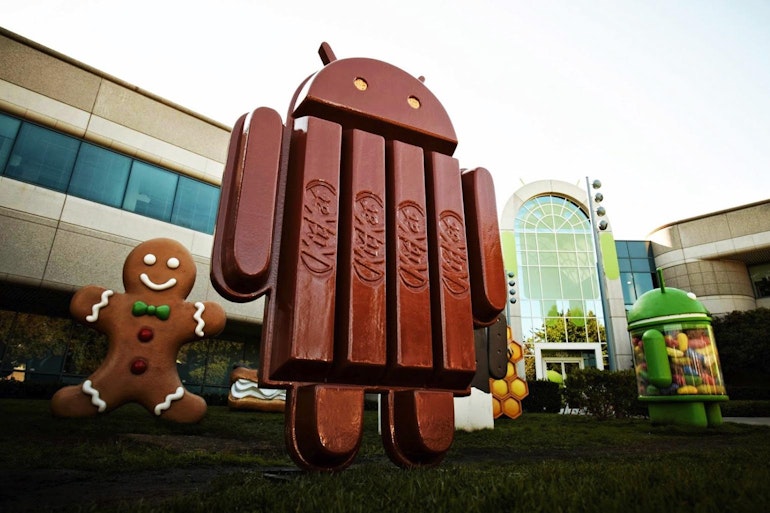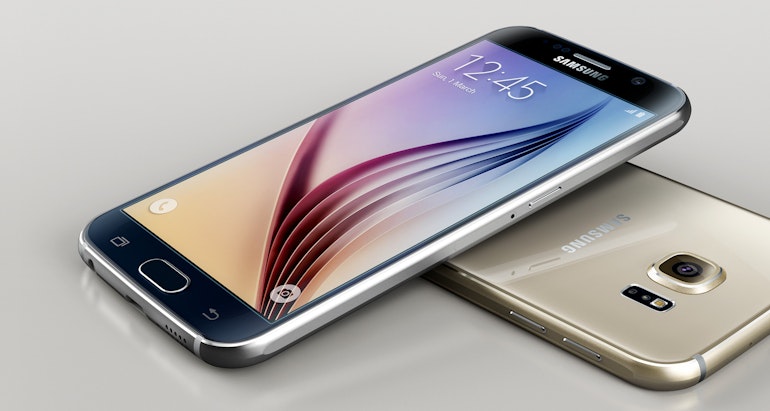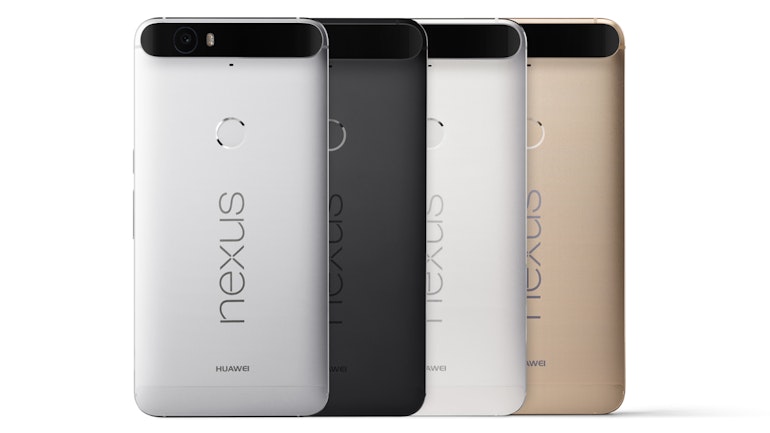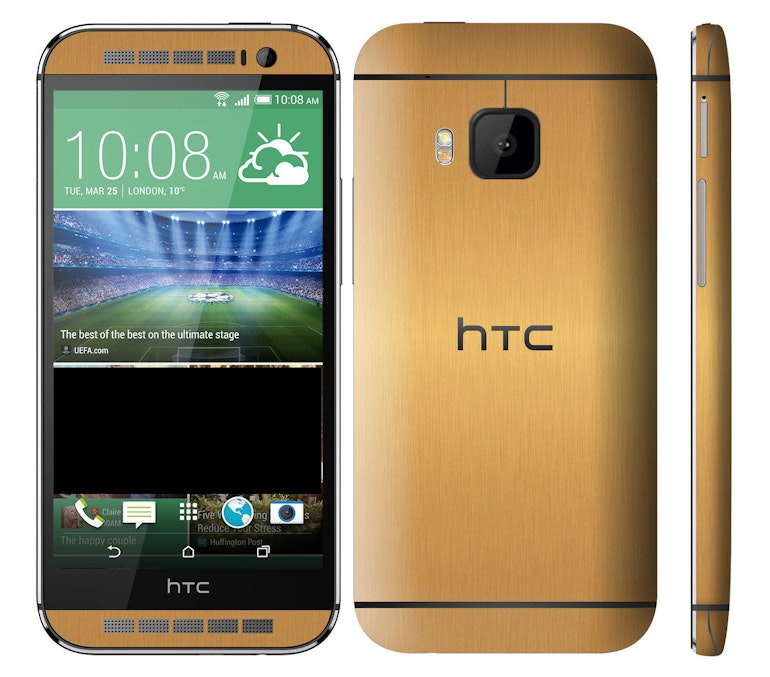Android is the name of the mobile operating system owned by American company; Google. It most commonly comes installed on a variety of smartphones and tablets from a host of manufacturers offering users access to Google’s own services like Search, YouTube, Maps, Gmail and more.This means you can easily look for information on the web, watch videos, search for directions and write emails on your phone, just as you would on your computer, but there’s more to Android than these simple examples.

The Android operating system is developed and owned by Google.
However, it's not exclusive to the Google-branded Nexus range of phones.
In fact, Android powers a host of handsets from some of the biggest mobile manufacturers.
These include HTC, Samsung, Sony, Motorola and LG, many of whom have enjoyed tremendous critical and commercial success with mobile phones running the Android operating system.
Who makes the best Android phones and tablet phones?

To a certain extent, this is largely a matter of opinion.
However, it is definitely worth noting that both HTC and Samsung's Android phones have been very favourably reviewed and have sold millions of units worldwide. Compare Samsung phones with uSwitch today.
Also highly rated are Google’s own branded Nexus range of Android mobiles.
Android mobile phone prices
Android phones range from state of the art models to cheaper handsets.
HTC and Samsung, for instance, have created superb Android phones for the top of the market, as well as mobiles running Android for those who want to spend a bit less.
Prices for the top-end models are around £500-£600 or more if you buy one outright. For that reason, most people prefer to get one on a contract deal and spread the cost over up to two years.
Monthly contract prices for these high-end models range from £25-£40 per month.
Mid-range Android phones can be had from around £300 outright or between £15-£25, while the cheapest, entry-level Android phones are £100 or so. Opt for a contract and expect to pay £10 or so per month.
Budget Android phones vs high-end Android mobiles
Pick a cheaper Android phone and you’ll still get a choice of thousands of apps and a great communication tool with excellent social networking options.
The main difference between cheaper Android phones and the most expensive models is that the former will typically feature lower-grade cameras and lower resolution screens, such as QVGA displays, whereas the latter will feature the latest, cutting-edge specifications.
Less costly Android mobiles will also typically have less powerful processors. Consequently, cheaper Android phones may not run as fast or as smoothly and may be left out of the latest software updates because they're not powerful enough to run them.
Google Nexus Android phones

As well as Android mobile phones from HTC, Samsung, Sony Ericsson and Motorola, Google has brought phones to market that feature its own branding. These are the well-regarded Nexus range of Android smartphones.
The main difference between Google Nexus Android phones and those made by third-party companies, such as HTC, are that Google-branded phones run what is called 'vanilla Android'.
This means the user interface they use is completely unaltered from Google’s original design and that they do not feature the customisations that the likes of HTC and Samsung use to put their own stamp on their Android phones.
As a result, Nexus phone users have experienced few of the problems that have sometimes affected owners of other phone manufacturers’ handsets – such as hogging more memory and battery life - and have been able to get Android updates for their mobiles as soon as Google has made them available (see below for more information Android custom skins).
This has made them especially popular with committed tech fans, who are keen to get the latest, greatest version of Android on their handset as soon as possible.
Android mobile apps
The sheer range of Android apps available is a key selling point of Android mobiles.
Head to the Android Market – Google’s official applications download store – or the third-party owned GetJar orAmazon Appstore and you’ll be able to choose from a vast array of applications, taking in everything from practical business tools to fun games.
Best of all, many of these apps are totally free to download.
All Android phones also come with Google applications preinstalled, such as YouTube, Google Maps and Gmail, so you’ll have great some apps to get to grips with.
Google frequently updates these apps free, making them easier and better to use each time.
The software maker also creates free-to-download, innovative new applications, including the brilliant Google Goggles app that lets you conduct web searches by just taking pictures with your mobile.
Android updates explained

Periodically, Google releases an upgraded version of the Android software.
These are sometimes referred to by fun, dessert or other baked goods-themed codenames, such as FroYo (Frozen Yoghurt), Gingerbread, Honeycomb or Ice Cream Sandwich.
More formally they are given a version number by Google, such as Android 2.3 or Android 3.0.
Each time you get an update you can look forward to a host of new features for your handset. An Android update also makes your phone faster to use and fixes glitches and issues that have been discovered.
It really is like getting a brand new phone each time. And better yet, Google provides all updates completely free of charge.
Getting an Android update
Networks will typically send an email or text message to your phone to notify you when an update is available to download.
Some networks will automatically push out an update to your phone over the air.
All you have to do in these cases is look out for notifications that an update is available and press a button to accept the update. It will then begin downloading directly to your phone.
The exception is Samsung, maker of the best-selling Galaxy range of phones.
If you've got a Samsung Android phone must first download the company's Kies software companion to your PC or Mac.
You can then download the update directly to your PC/Mac and plug in your phone to transfer the latest Android OS iteration to your mobile.
If you are getting the update over the air, it’s a good idea to use your wireless home broadband connection.
This is because an update is a fairly large file, which takes much longer to download over a 3G or 4G mobile broadband connection.
It’s also prudent to back up any information on your phone to a microSD card before performing the update, so that you retain all your contacts and other information if there is a problem installing it.
Android custom skins explained
Android skins are user interfaces that are particular to a manufacturer, such as HTC’s Sense and Samsung’s TouchWiz.
A user interface is what determines the layout of menus and functions on your phone’s screen.
Many phone makers prioritise social networking for their custom skins, with a view to making it easy to update your profile and stay in the loop with all your friends.
For this reason, most specially created user interfaces feature one-touch access to social networking apps, such as Facebook, Twitter and MySpace, as well as a single location for you to view all your social networking activity.
Perhaps the best rated custom skin for Android mobile phones is HTC Sense, which has been lauded for its user friendliness and the cleanness of its layout.
In a uSwitch poll, Sense was dubbed the number-one custom interface for Android phones by 70 per cent of participants.
However, although welcomed by many users of Android phones, custom skins have on occasion caused notable issues with Android updates.
Some phone makers have experienced problems with getting updated versions of Android to work with their own user interface, which has resulted in delays in pushing out the upgrade to phones.
This development has fuelled speculation that Google will eventually do away with custom skins in future by allowing less scope for phone makers to customise their Android phones.
History of Android

Android was first unveiled to an expectant world back in November 2007.
However, the first commercially available phone to run the Android operating system did not go on sale until late 2008, when the T-Mobile G1 hit the shelves.
Manufactured by HTC on T-Mobile’s behalf, the G1 raced to one million sales, prompting a rush of phone makers to create their own handsets based on the Android platform.
Since then we have seen the likes of the Samsung Galaxy S and HTC Desire smash the G1’s early record several times over with global sales running into millions. Just as popular was the debut Android tablet, the Samsung Galaxy Tab.
Also helping to spread the OS’s popularity was the arrival of cheaper Android phones, not least the cute and very compact HTC Magic.
This was also the first to be offered on pay as you deals, thus making Android accessible to younger consumers and teenagers, as well as people on a budget.
Google’s first update for the OS was codenamed Cupcake, but was officially known as Android 1.5 and landed back in April 2009.
This debuted new functions, including the option to upload videos to YouTube, new widgets and also gave users fresh animations between screens.
Since Cupcake was released, Android updates have arrived regularly, with each overhaul of the operating system helping keep Android at the forefront of consumer technology.
The latest version,Android Marshmallow isn't an overhaul of everything you thought you knew about Android. Rather, it's a refinement and extension of the core features and functionality of Android Lollipop. In this Android Marshmallow review, I take a look at the major features of Google's latest OS version to let you know where it hits, where it misses, and where it has room to improve.
















0 comments:
Post a Comment